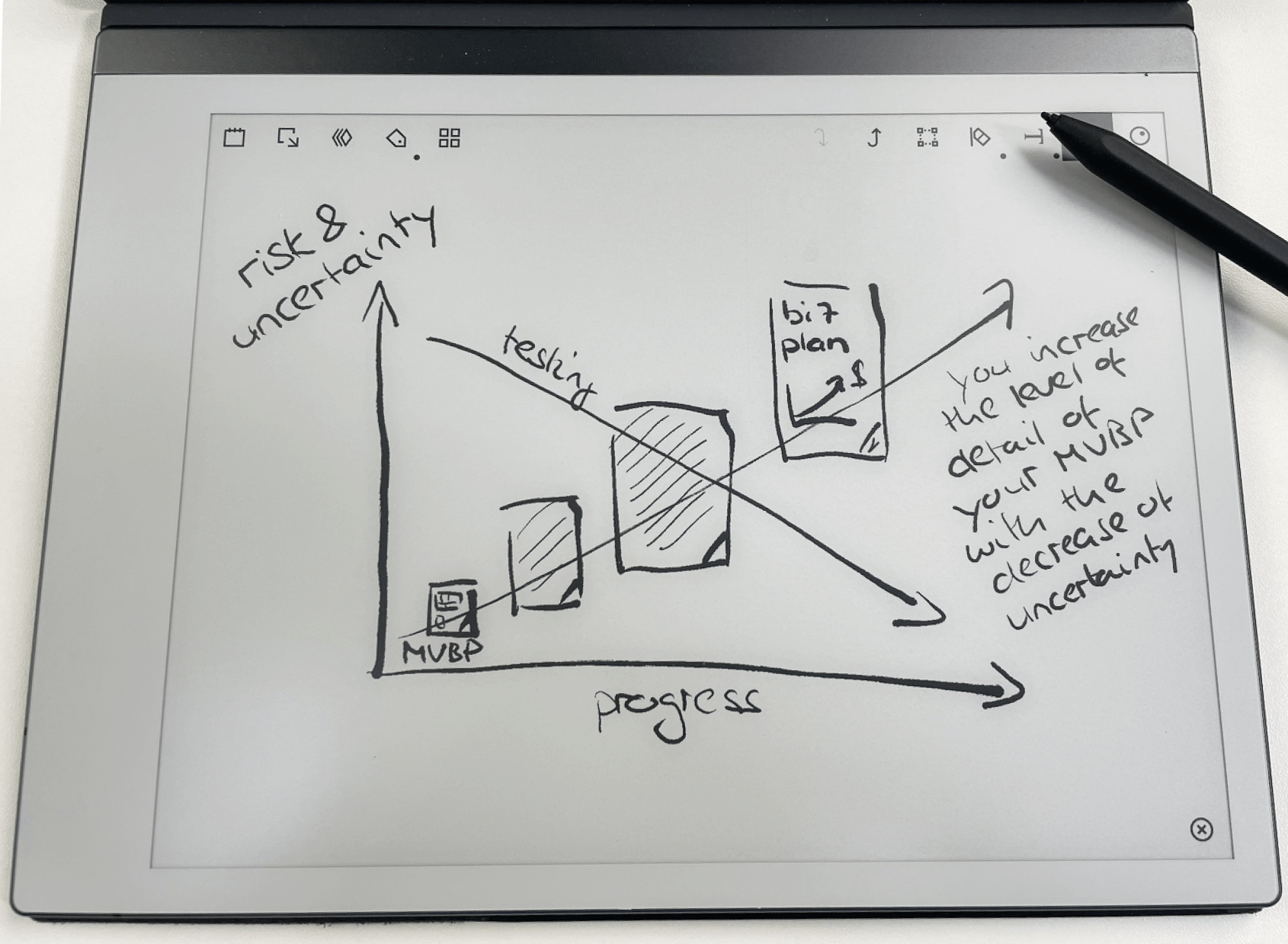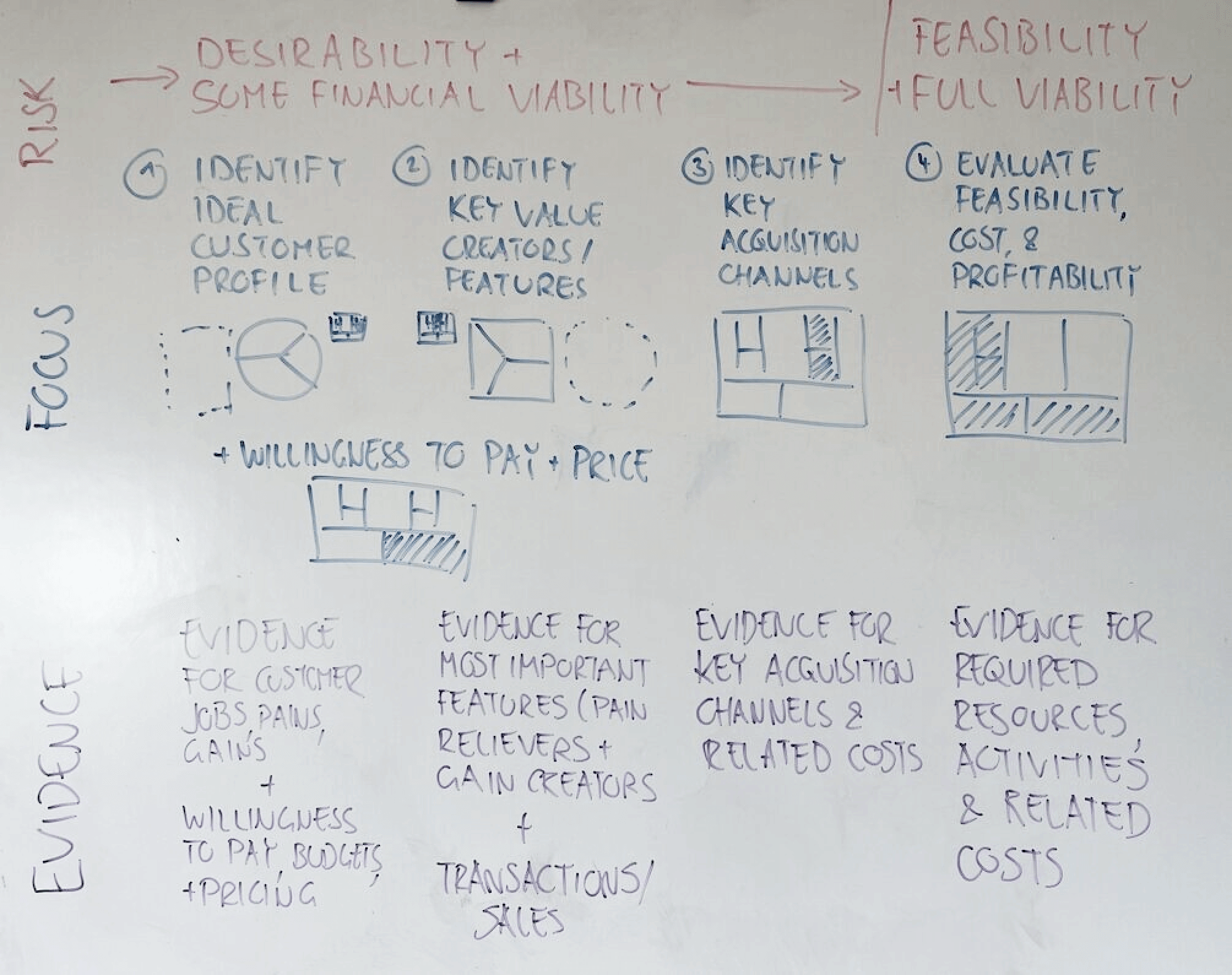Build your business without a business plan
Build your business without a business plan
In the context of innovation and entrepreneurship, the lengthy document and colour-coded spreadsheet is total nonsense. Innovation and entrepreneurship are a search challenge, not an implementation challenge.
Innovation and entrepreneurship are a search challenge, not an execution challenge
Traditionally, the business plan is a 20+ page document with a spreadsheet attached. The document outlines your idea and how you intend to implement it. The spreadsheet outlines your financial projections over several years.
In the context of innovation and entrepreneurship, the lengthy document and colour-coded spreadsheet is total nonsense. Innovation and entrepreneurship are a search challenge, not an implementation challenge.
When uncertainty is high, you're better off admitting that you don't know if your idea is going to work. Your job is to shape, test, and adapt all aspects of your business idea until it's likely to work at scale. The task isn’t to blindly implement what appears to be a great-looking idea outlined in a business plan. The task is to search for:
A value proposition that customers care about
A profitable and scalable business model
The problem with traditional business plans
There are three reasons why traditional business plans are dangerous in the context of innovation and entrepreneurship:
We make an idea look awesome and describe its implementation as if we know it is going to work
We invest in fantasy numbers as if it were possible to project them over several years for an unproven idea.
We don't accept that in the uncertain context of innovation and entrepreneurship, unproven ideas are likely to change more or less radically until they (might) work.
The consequence of the above is that we focus on what might look like a "good idea" and then invest in its execution. Of course we now know that the initial idea often changes more or less radically. Youtube started as a dating site. Nespresso as a business-to-business concept. Nespresso almost got killed by their owner, Nestlé, because they didn't make the business plan. Both had to radically change in order to succeed. Both are now multi-billion dollar businesses that have nothing to do with the original business plan. That's just two examples of many.

From Minimum Viable Business Plan (MVBP) to full implementation-oriented business plan
From static business plan to Minimum Viable Business Plan (MVBP)
Here's a better approach. Start with a Minimum Viable Business Plan that you continue to iterate and refine based on the evidence you gather in the market. Here's a sketch of the process that fully builds on what Strategyzer and Steve Blank already preach:
1. Rough out a Minimum Viable Business Plan (MVBP) in a couple of hours (1 day max):
This includes a Business Model Canvas, Value Proposition Canvases, a back of the napkin calculation or spreadsheet of your revenues, and the key hypotheses you intend to test. You fully admit that everything in this MVBP is likely to change.
2. Test and adapt until customers care about your value proposition(s) and refine your MVBP accordingly:
Your MVBP is no longer pure fantasy since you have evidence for customer jobs, pains, and gains (or "problem") and your value proposition (or "solution"). You can now proceed to some evidence-based market sizing. Ideally you also have first evidence for willingness to pay at this stage. You're starting to gather evidence to back up your fantasy spreadsheet.
3. Test and adapt customer acquisition, retention, and pricing and refine your MVPB accordingly:
Your goal here is to support your fantasy spreadsheet with real evidence. Equipped with this evidence you can proceed to a more fine-grained modelling of your revenues and ideally costs and profitability.
4. Turn your MVBP into an execution-oriented business plan:
Equipped with sufficient evidence for all aspects of your business model you can proceed to scaling. This is the point at which a more traditional business plan could make sense.
I realized how important it is to sketch out a full business model and rough numbers at the beginning of the innovation and entrepreneurship journey many years ago. First evidence for this came from Dr. Henning Trill when Strategyzer collaborated with him to build up Bayer's Catalyst (Innovation) Fund. He explained to me how much he valued our approach of focusing on business from the get-go rather than just focusing on product. The key is to keep it rough rather than getting stuck in analysis paralysis.
The Minimum Viable Business Plan approach is simply a refinement of the documentation of what I already explained in my post on the phases of the innovation/entrepreneurship journey. It does of course require corporate leaders and investors to see the first sketch as pure fantasy. They need to push teams to provide increasing evidence for each phase of the journey.

The phases of the innovation and entrepreneurship journey
AHD Consulting Solution is here to help you with tools and insights to not just deal with these challenges but turn them into opportunities for innovation success. Accessible to corporations of any size, our sprints and programs include interactive workflows, videos, pre-structured workspaces, and much more. If you want to discuss a potential project, you can email on services@ahdconsultingsolution.com or get in touch with us here. Alternatively, you can book in a free 15-minute consultation call here.
Want more?

I am a business consultant who develop marketing and business management strategies that work for your company.



